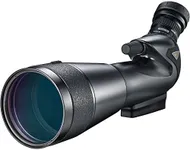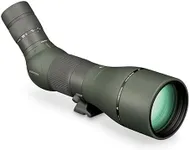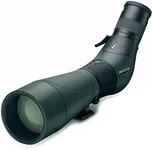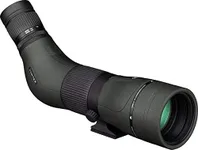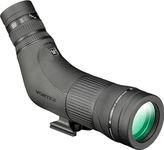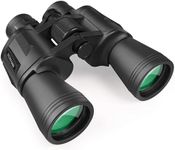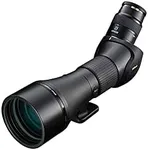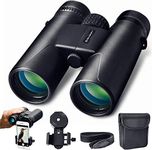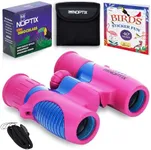Buying Guide for the Best Spotting Scopes For Hunting
When choosing a spotting scope for hunting, it's important to consider several key specifications to ensure you get the best fit for your needs. Spotting scopes are essential for hunters who need to observe game from a distance, and the right scope can make a significant difference in your hunting experience. Here are the key specs to consider and how to navigate them to find the perfect spotting scope for you.MagnificationMagnification refers to how much closer the object will appear through the scope compared to the naked eye. This is important because higher magnification allows you to see more detail from a greater distance. Spotting scopes typically range from 15x to 60x magnification. For general hunting, a scope with 20x to 40x magnification is usually sufficient, providing a good balance between detail and field of view. If you need to observe game at very long distances, consider a scope with higher magnification, but be aware that higher magnification can also make the image shakier and more sensitive to movement.
Objective Lens DiameterThe objective lens diameter is the size of the front lens of the spotting scope, measured in millimeters. This spec is important because a larger objective lens allows more light to enter the scope, resulting in a brighter and clearer image, especially in low-light conditions. Common sizes range from 50mm to 80mm. For hunting, a lens diameter of 60mm to 80mm is ideal as it provides a good balance between brightness and portability. If you often hunt in low-light conditions, such as dawn or dusk, a larger objective lens will be beneficial.
Field of ViewField of view (FOV) is the width of the area you can see through the scope at a specific distance, usually measured in feet at 1,000 yards. A wider FOV is important for quickly locating and tracking moving game. Spotting scopes with lower magnification generally have a wider FOV. For hunting, a FOV of 100 to 200 feet at 1,000 yards is typically sufficient. If you prioritize tracking moving targets, opt for a scope with a wider FOV.
Eye ReliefEye relief is the distance from the eyepiece to your eye where you can still see the full field of view. This is important for comfort, especially if you wear glasses. Spotting scopes usually offer eye relief ranging from 12mm to 20mm. For hunters who wear glasses, look for a scope with at least 15mm of eye relief to ensure a comfortable viewing experience. If you don't wear glasses, shorter eye relief may be acceptable.
Lens CoatingLens coating refers to the special coatings applied to the lenses to reduce glare and improve light transmission. This is important for producing a clearer and brighter image. There are different levels of coating: coated (a single layer on one lens surface), fully coated (a single layer on all air-to-glass surfaces), multi-coated (multiple layers on one or more surfaces), and fully multi-coated (multiple layers on all air-to-glass surfaces). For hunting, fully multi-coated lenses are ideal as they provide the best image quality and brightness.
Waterproof and FogproofWaterproof and fogproof features ensure that the spotting scope can withstand harsh weather conditions and prevent internal fogging due to temperature changes. This is important for maintaining clear visibility in various environments. Look for scopes that are nitrogen or argon purged and have O-ring seals. For hunting, especially in unpredictable weather, a waterproof and fogproof scope is essential to ensure reliable performance.
Weight and PortabilityWeight and portability refer to how easy it is to carry and handle the spotting scope. This is important for hunters who need to move around frequently or cover long distances. Spotting scopes can range from lightweight, compact models to heavier, more robust ones. For hunting, consider a scope that balances weight and performance. A lighter scope (under 3 pounds) is easier to carry, but make sure it still meets your optical needs.

